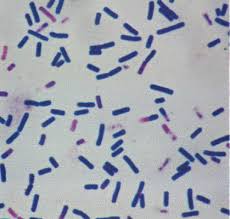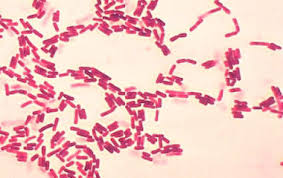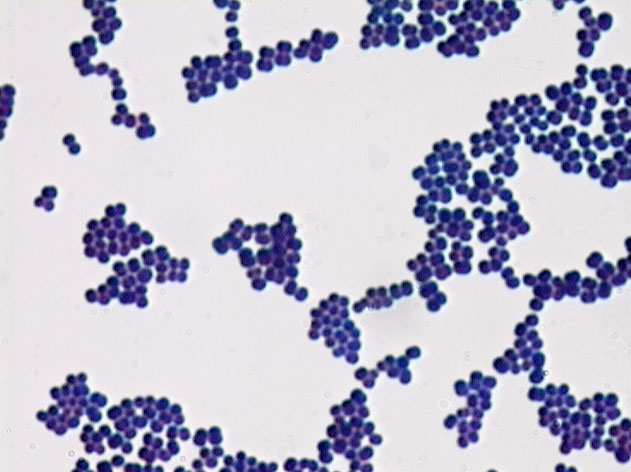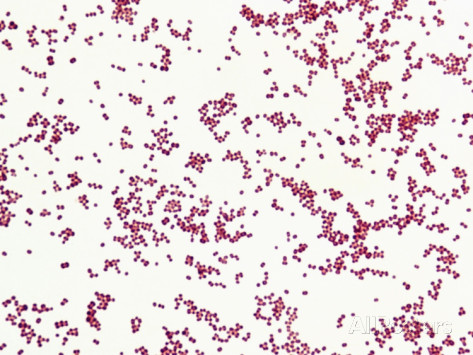 |
 |
 |
 |
Gram positive rod |
Gram negative rod |
Gram positive cocci |
Gram negative cocci |
Differential Staining of Bacteria; Knowing Your Gram Stain Reactions Using Three Simple Rules
Why differential staining?
Most bacteria can be stained with positively charged stains. If one stain is utilized a microscope can only be used to observe the shape and arrangement of the cells; rod-shaped cells (bacillus, curved, spiral, fusiform) or berry shaped cells (coccus); arranged; in clusters, chains, two together (diplococci), etc.
A differential stain like that invented by Hans Christian Gram in 1882 will give you more information and allow you to group the stainable bacteria into more groupings; Gram positive rods, Gram negative rods, Gram postive cocci and Gram negative cocci (see images below). A purple stain (crystal violet) is used to stain the bacteria first, the stained bacteria are decolorized and then stained with a red stain (Safranin). Bacteria with thick cell walls keep the first (purple) stain and are called Gram positive. Thin walled bacteria cannot keep the first stain (purple) so when the second stain (red) is placed on the organisms they become red or Gram negative. For a video of the Gram stain procedure click here .
 |
 |
 |
 |
Gram positive rod |
Gram negative rod |
Gram positive cocci |
Gram negative cocci |
GRAM POSITIVE BACTERIA ARE PURPLE. Gram negative organisms are Red. Hint; Keep your P's together; Purple is Positive. Gram stains are never pink they are red or purple so you don't destroy the rule; keep your P's together.
In microbiology bacteria have been grouped based on their shape and Gram stain reaction. This leads to lots and lots of memorization. Unfortunately, there are a lot of bacterial genera that cause human infection. One way to lower you memory load is to lump the genera, their Gram stain reactions, and shape together and save yourself some neurons for other important information. I can give you the Gram stain reaction of nearly all the human pathogens by going through a simple process (more detail in the Three Simple Rules below); 1. Learn which bacteria can't be stained; 2a. Learn which bacteria are cocci; 2b. Learn which cocci are Gram negative; 3. Learn all the Gram positive rod names (all the rest are Gram negative rods).
Three Simple Rules to Learn the Gram Stain Reactions for the Human Bacterial Pathogens
© 2017 Neal R. Chamberlain,Ph.D. All rights reserved.
Site Last Revised 12/11/19
Neal Chamberlain, PhD. A. T. Still University of Health Sciences/Kirksville College of Osteopathic Medicine.
Take Care and Think Microbiologically!